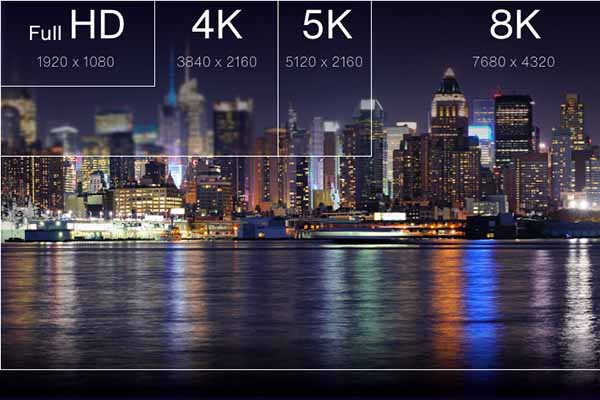Recently, there has been much talk about ultra-high-definition solutions in the security market. More often than not, media has focused on 8K cameras. Nevertheless, a True 8K solution requires more than just UHD cameras. Hikvision stands out from the crowd by providing an all-encompassing solution powered by front- and back-end products with 8K capabilities
The trend toward clear, high-definition imaging
As Hikvision predicted earlier this year in its Top 8 trends for the security industry in 2022, crystal clear imaging has continued to be a basic requirement in the security industry. The ability to zoom into large scenes to view exact details without loss of quality is crucial for security management. The enormous value in employing high-definition cameras with 8K resolution to ensure clear imaging in the case of security incidents cannot be overstated.
8K cameras come equipped with dedicated Image Signal Processors (ISPs) that convert RAW images from high-performance imaging sensors into high-quality images, as well as carry out various types of image processing effectively and effortlessly. ISP algorithms including de-mosaicing, de-noising, de-blurring, and sharpening all help to deliver enhanced imaging with reduced visual noise and well-preserved details.
Nevertheless, even when 8K technology gives people an unprecedented capacity to get more detail from a scene, these resolutions come with tradeoffs – they require higher processing power than other forms because there’s so much information being processed at once. In addition, they also need storage devices compatible with the 8K standards to access, store, transfer, decode, and output videos, before video images can be viewed. Without 8K NVRs and displays, 8K cameras would just be superfluous.
Hikvision’s all-encompassing 8K solution
In order to deliver a “True 8K” experience to users, Hikvision has developed a total solution, complete with 8K cameras, 8K NVRs, and 8K displays. Cameras such as the 32 MP 360° Panoramic & PTZ Camera and 32 MP 180° PanoVu Network Camera are capable of capturing ultra-high-resolution video images – specifically 7680 x 4320 pixels – which is four times the resolution of 4K and 16 times that of 1080p.
At the back-end, Hikvision recently launched its M-Series NVRs to handle video access, storage, transfer, decoding, and rendering of 8K images. Videos can then be displayed on 8K LED screens made up of P0.9 Fine Pixel Pitch COB LED Display Units. The combination of these front and back-end products takes full advantage of the power of 8K technology, and offers a “True 8K” experience with incredibly clear imaging with fluid preview and playback.
But here is one of the most significant advantages to this solution: since 8K resolution displays images with intricate detail, it lays the foundation for more precise and efficient video analytics. With 8K imaging, AI recognition rates improve significantly, and video analytics provides security operators with highly accurate alerts and clear image detail, enhancing their ability to effectively intervene and take action when an incident occurs. In other words, the whole investment pays off better on every level.
Even when videos are manually reviewed for real-time monitoring or post-incident investigation, the ultra-clear, true-to-life 8K visuals provide images that are rich in detail, improving security operators’ target identification ability, providing them the most accurate evidence available to investigate and promptly respond to an event.
A total solution that serves users from all kinds of industries
With such powerful front and back-end products, Hikvision’s all-encompassing 8K solution gives customers an extremely clear and detailed visual experience in all kinds of scenarios. The solution significantly boosts video content analysis, forensic evidence gathering, security staff resources, and more. The LED display products provide a more vivid – even stunning – visual experience, as 8K cameras and 8K NVRs are used in both indoor and outdoor spaces such as airports, harbors, public halls, squares, stadiums, stations, etc., where wider angles of view, and sharper, more detailed images are required. They empower users from all kinds of industries with the capacity to zoom into large scenes to view strikingly realistic details without quality loss.
















